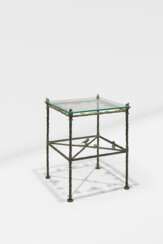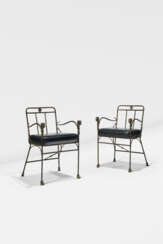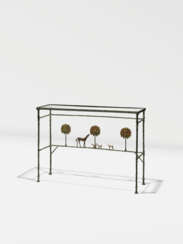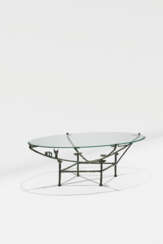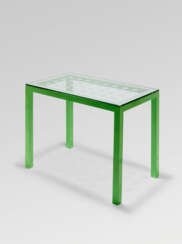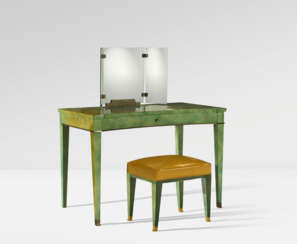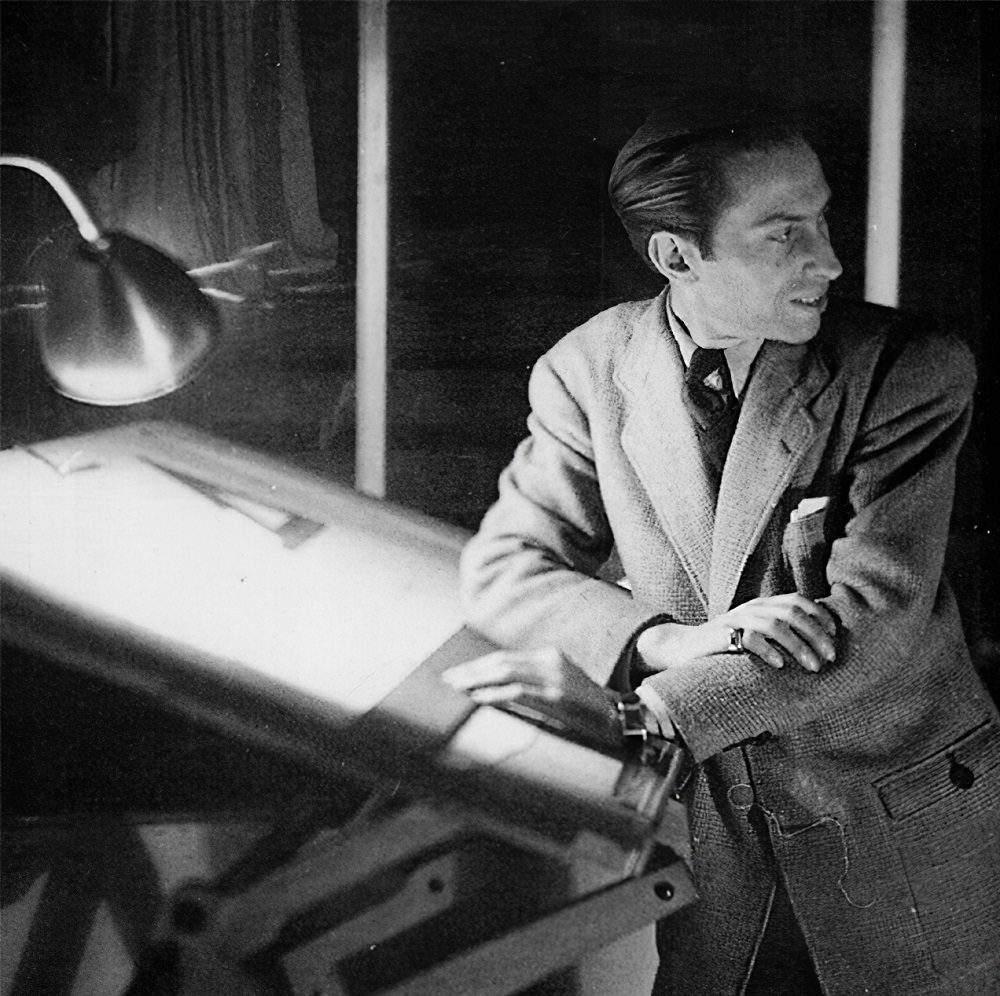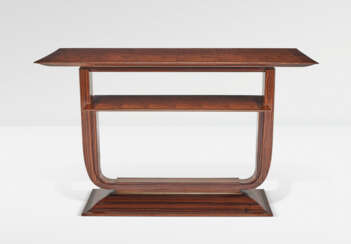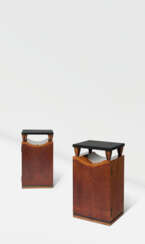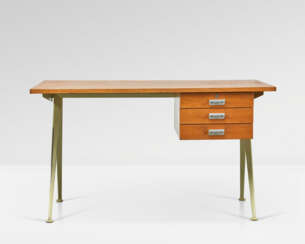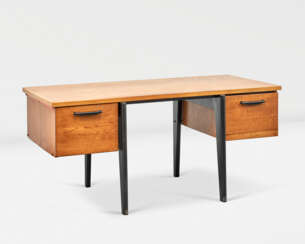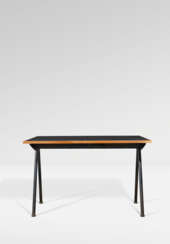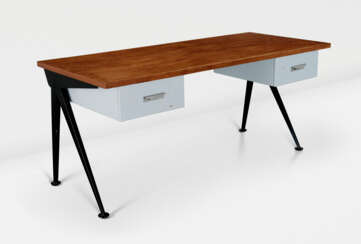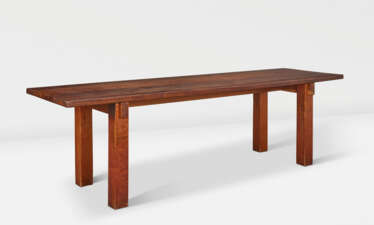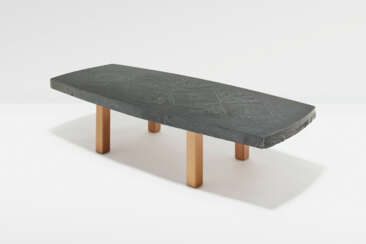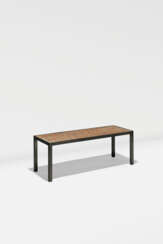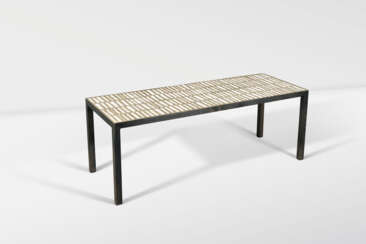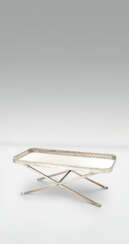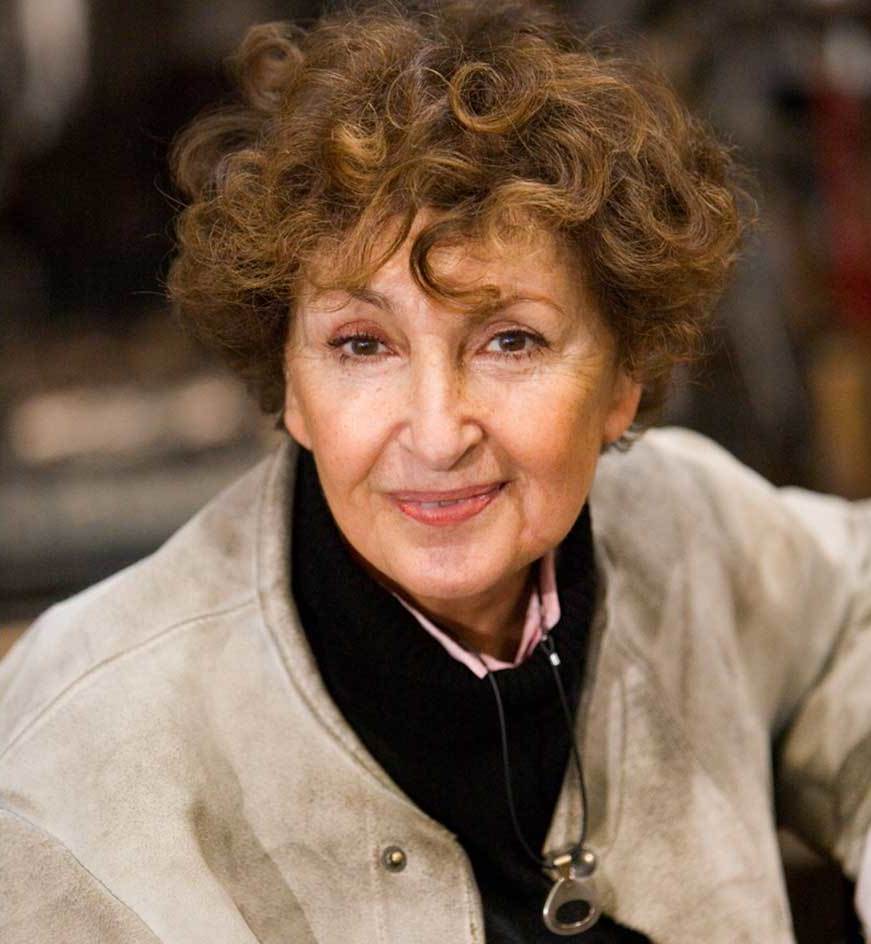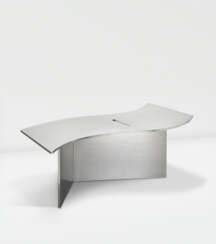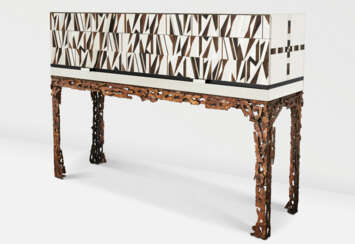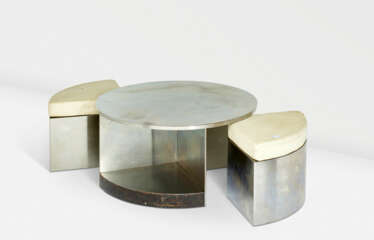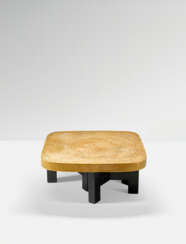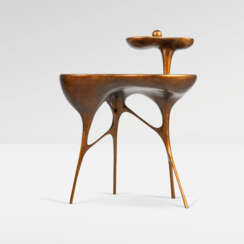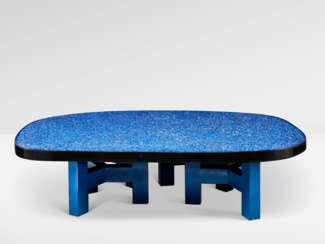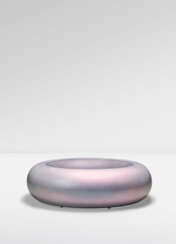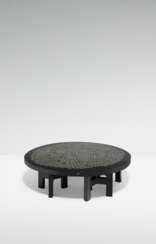
Tables — Design
Maurice Max Ingrand, better known as Max Ingrand was a French artist and decorator, known for his work in studio glass and his stained glass windows.
Ingrand created numerous church stained glass windows during the late 1940s to 1960s. In the aftermath of World War II, he was tasked with replacing 47 of the stained glass windows destroyed at Notre-Dame de Paris.
Max Ingrand was noted for his modern designs.
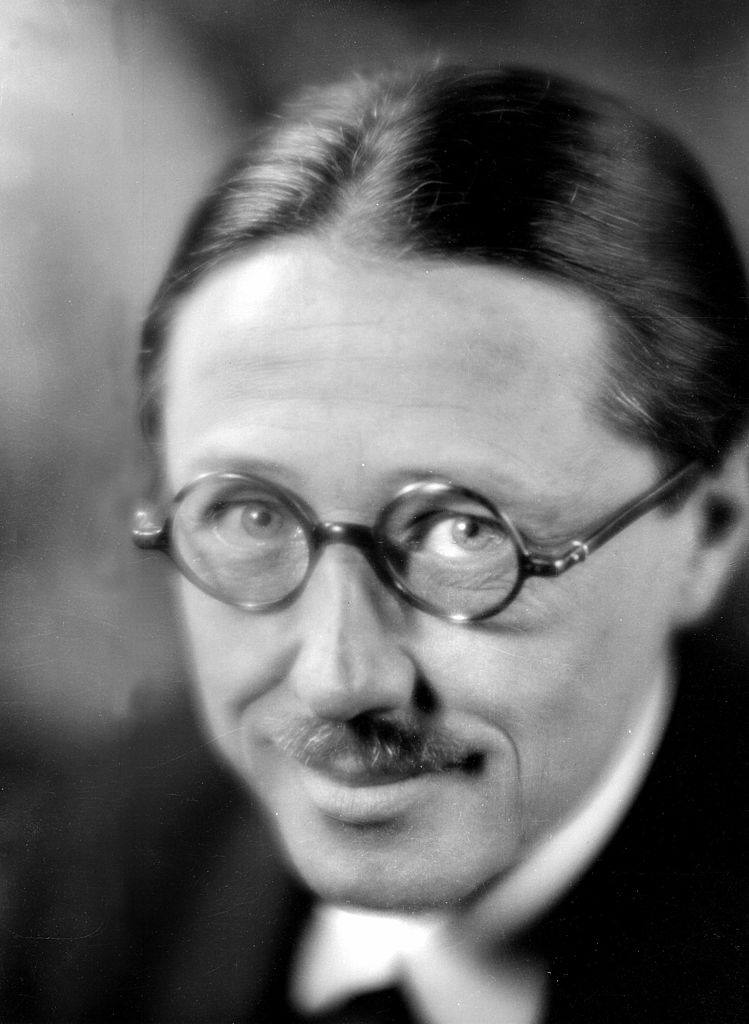
Émile-Jacques Ruhlmann, (sometimes called Jacques-Émile Ruhlmann), was a French furniture designer and interior decorator, who was one of the most important figures in the Art Deco movement. His furniture featured sleek designs, expensive and exotic materials and extremely fine craftsmanship, and became a symbol of the luxury and modernity of Art Deco. It also produced a reaction from other designers and architects, such as Le Corbusier, who called for simpler, functional furniture.
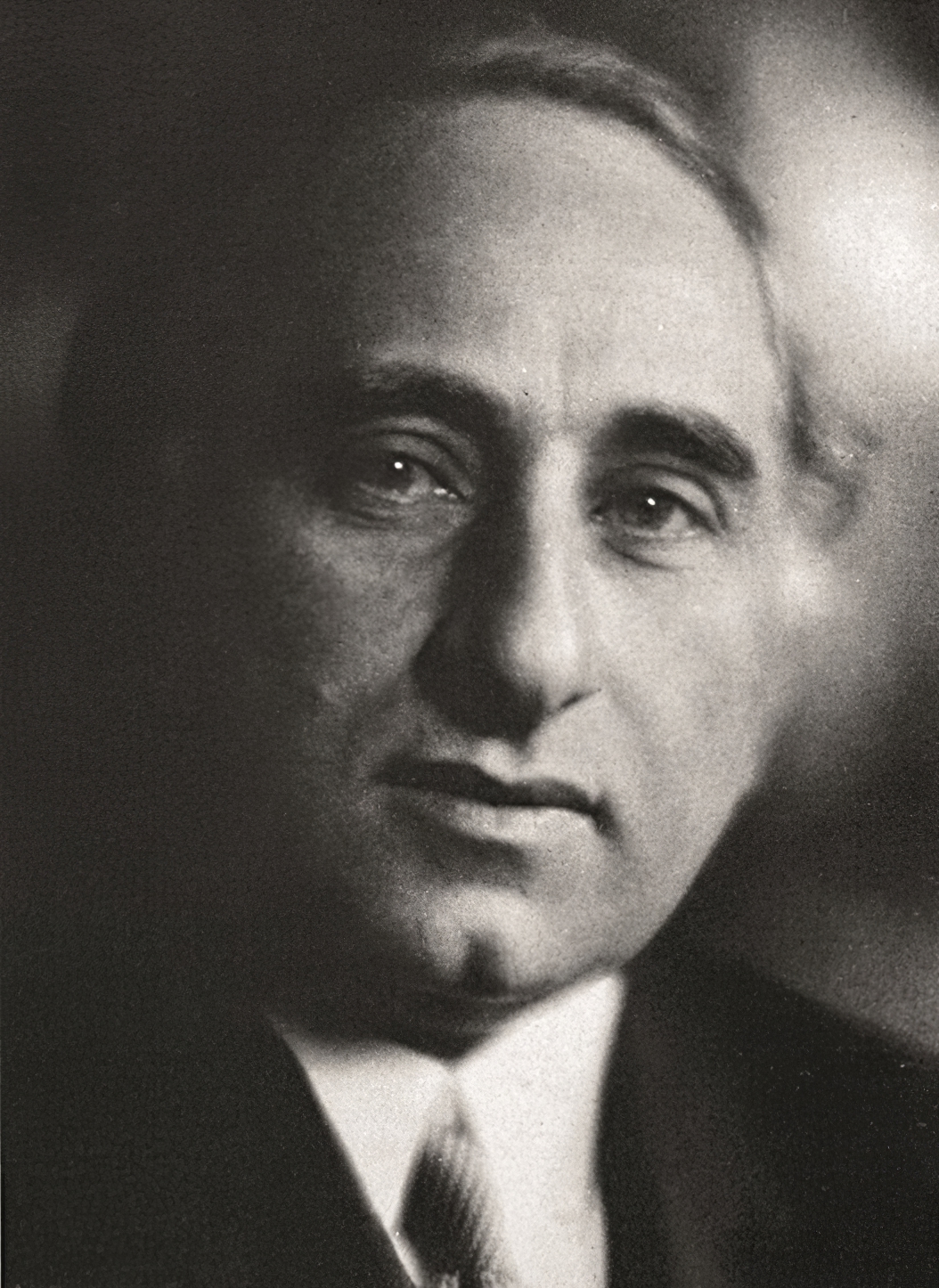
Pierre Chareau was a French architect and designer.
Chareau designed the first house in France made of steel and glass, the Maison de Verre.
Chareau was a member of Congrès International d'Architecture Moderne.
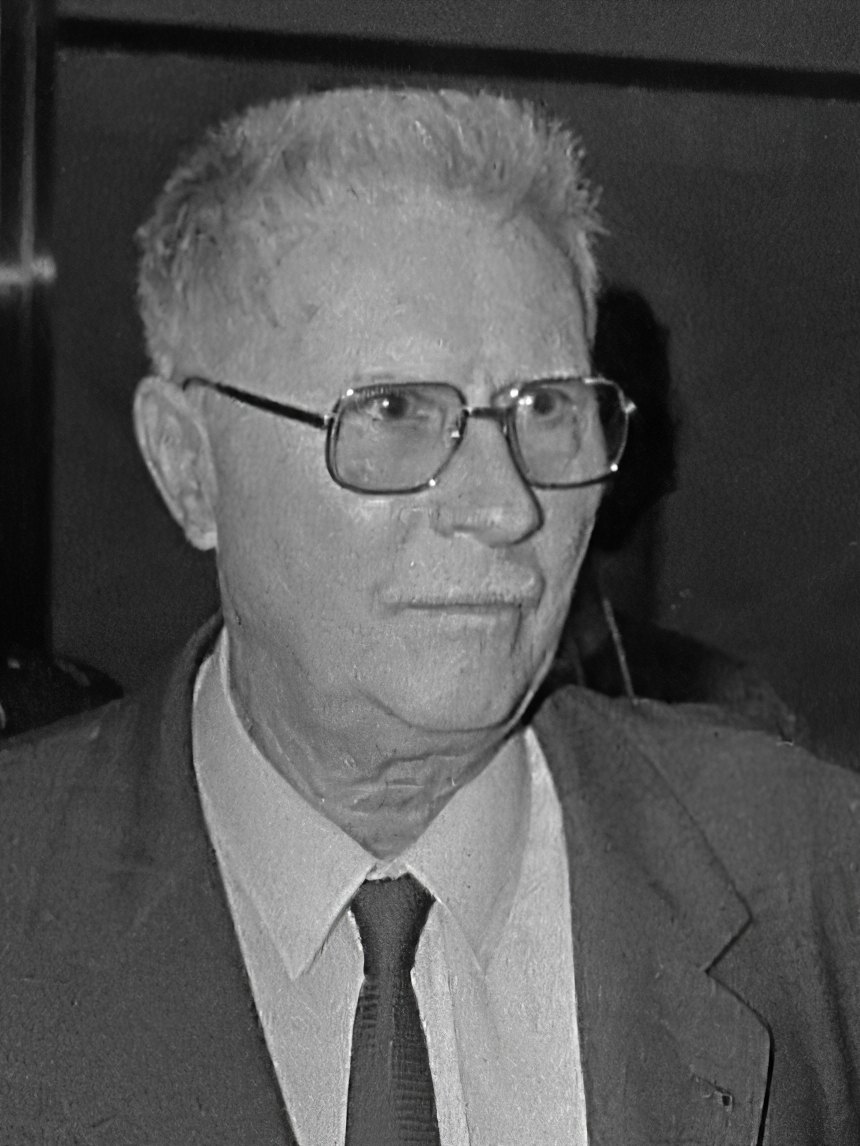
Jean Prouvé was a French metal worker, self-taught architect and designer. Le Corbusier designated Prouvé a constructeur, blending architecture and engineering. Prouvé's main achievement was transferring manufacturing technology from industry to architecture, without losing aesthetic qualities. His design skills were not limited to one discipline. During his career Jean Prouvé was involved in architectural design, industrial design, structural design and furniture design.

Jean Prouvé was a French metal worker, self-taught architect and designer. Le Corbusier designated Prouvé a constructeur, blending architecture and engineering. Prouvé's main achievement was transferring manufacturing technology from industry to architecture, without losing aesthetic qualities. His design skills were not limited to one discipline. During his career Jean Prouvé was involved in architectural design, industrial design, structural design and furniture design.

Jean Prouvé was a French metal worker, self-taught architect and designer. Le Corbusier designated Prouvé a constructeur, blending architecture and engineering. Prouvé's main achievement was transferring manufacturing technology from industry to architecture, without losing aesthetic qualities. His design skills were not limited to one discipline. During his career Jean Prouvé was involved in architectural design, industrial design, structural design and furniture design.

Jean Prouvé was a French metal worker, self-taught architect and designer. Le Corbusier designated Prouvé a constructeur, blending architecture and engineering. Prouvé's main achievement was transferring manufacturing technology from industry to architecture, without losing aesthetic qualities. His design skills were not limited to one discipline. During his career Jean Prouvé was involved in architectural design, industrial design, structural design and furniture design.
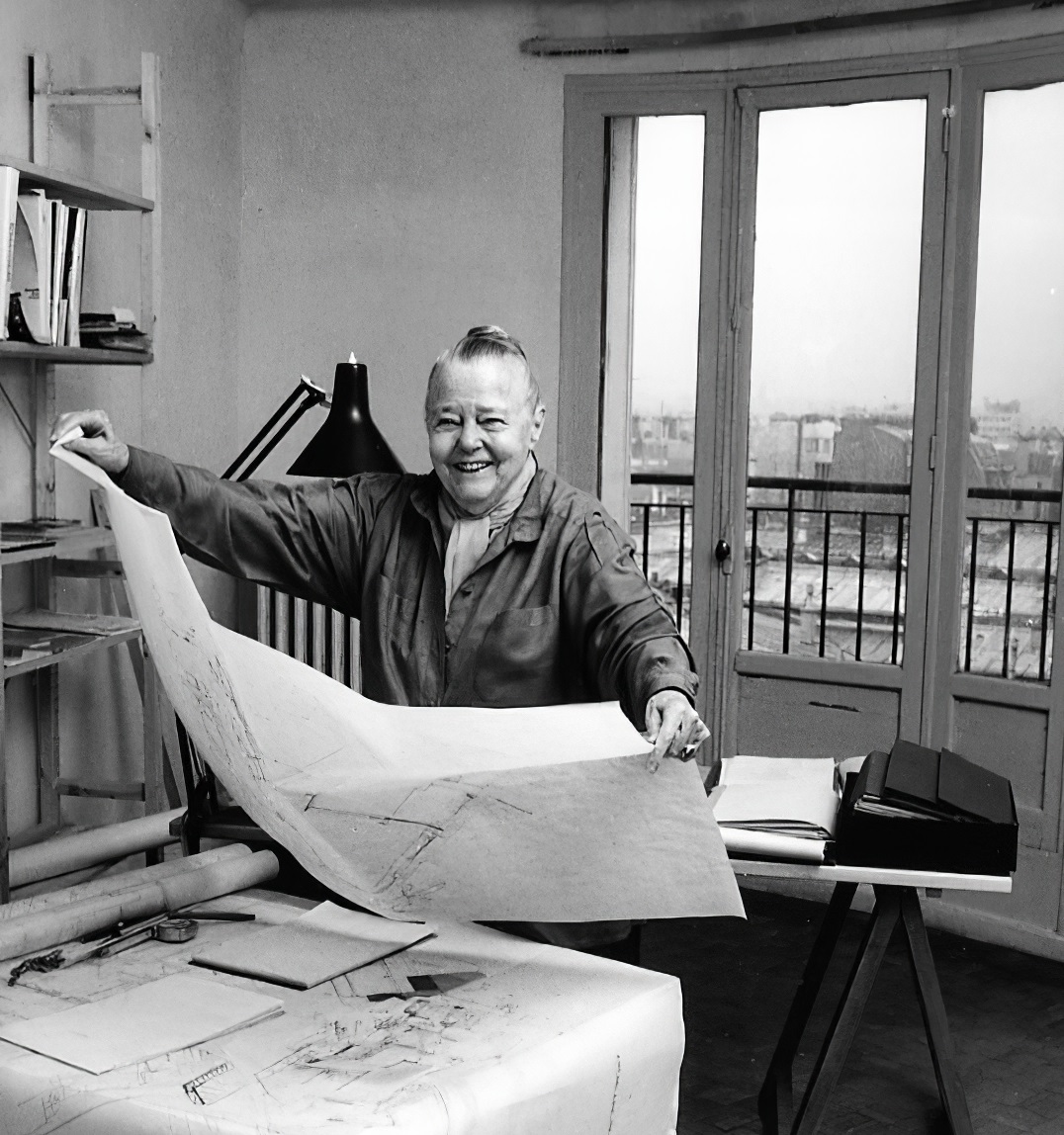
Charlotte Perriand was a French architect and designer. Her work aimed to create functional living spaces in the belief that better design helps in creating a better society. In her article "L'Art de Vivre" from 1981 she states "The extension of the art of dwelling is the art of living — living in harmony with man's deepest drives and with his adopted or fabricated environment." Charlotte liked to take her time in a space before starting the design process.
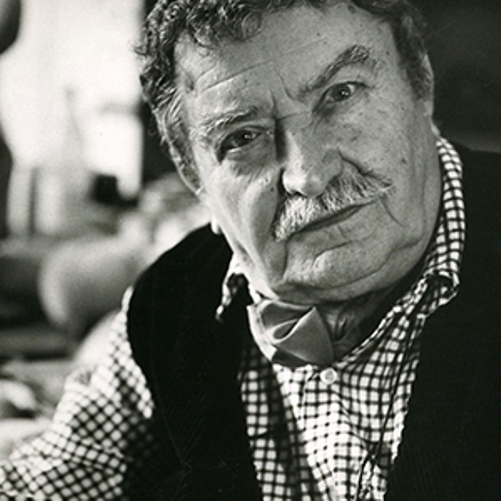
Roger Capron, birth name Roger Henri Louis Capron, is a French ceramic sculptor and draftsman.
Capron studied applied arts in Paris and in 1946 founded a pottery workshop, l'Atelier Callis, in Vallauris, employing up to 120 people at various times. Capron won many awards, including the Grand Prix International de la Céramique in 1970, and in 1983 he founded the now famous Atelier Capron.
Roger Capron's creations often use clay tiles or enameled lava tiles, traditionally used for decorative panels. This recognizable way of using ceramics in furniture and objects has become the designer's trademark. Capron was the first to put his ceramic expertise at the service of semi-industrial production. The workshop developed into a small factory and gained an international reputation.
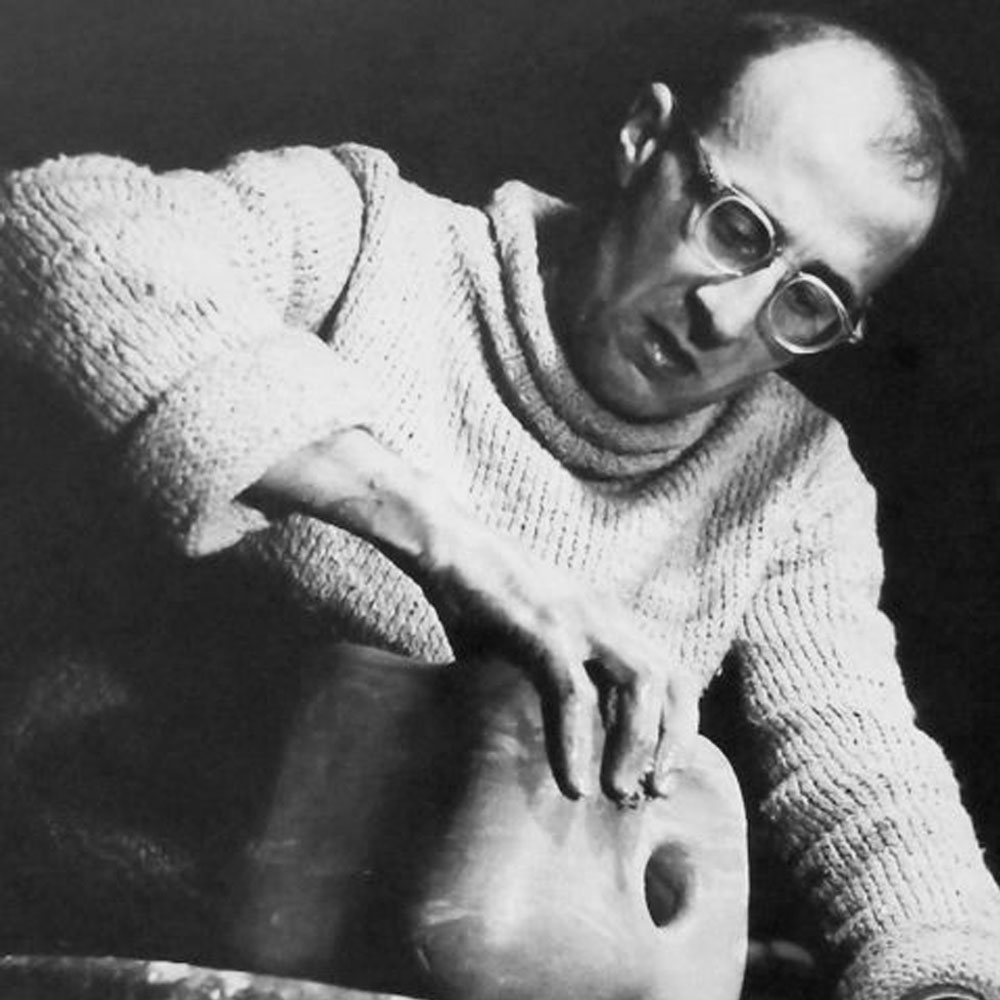
Georges Jouve was an important ceramist of the 20th century. At 17 years old, Jouve enrolled at the prestigious Ecole Boulle in Paris where he received theoretical instruction in Art History in addition to his technical studies as a sculptor. After Graduation in 1930 he first embarked on his artistic career as a theatrical set designer. During World War II, Jouve was captured by the Germans and interned in a German camp. After several attempts he escaped from the camp and took refuge at his step parents home in a potters village in the South of France called Dieulefit. In 1944, Jouve and his family moved back to Paris. He opened his studio in Paris and was invited by Jacques Adnet to participate in the exhibition “La Ceramique Contemporaine” by the Compagnie des Arts Francais. He then participated annually in numerous 'Salons' in France and internationally such as the “Salon des Artistes Decorateurs” in Paris, Association Francaise d'Action Artistique in Rio de Janeiro, and Vienna, Toronto, Rome, Milan, and Cairo.
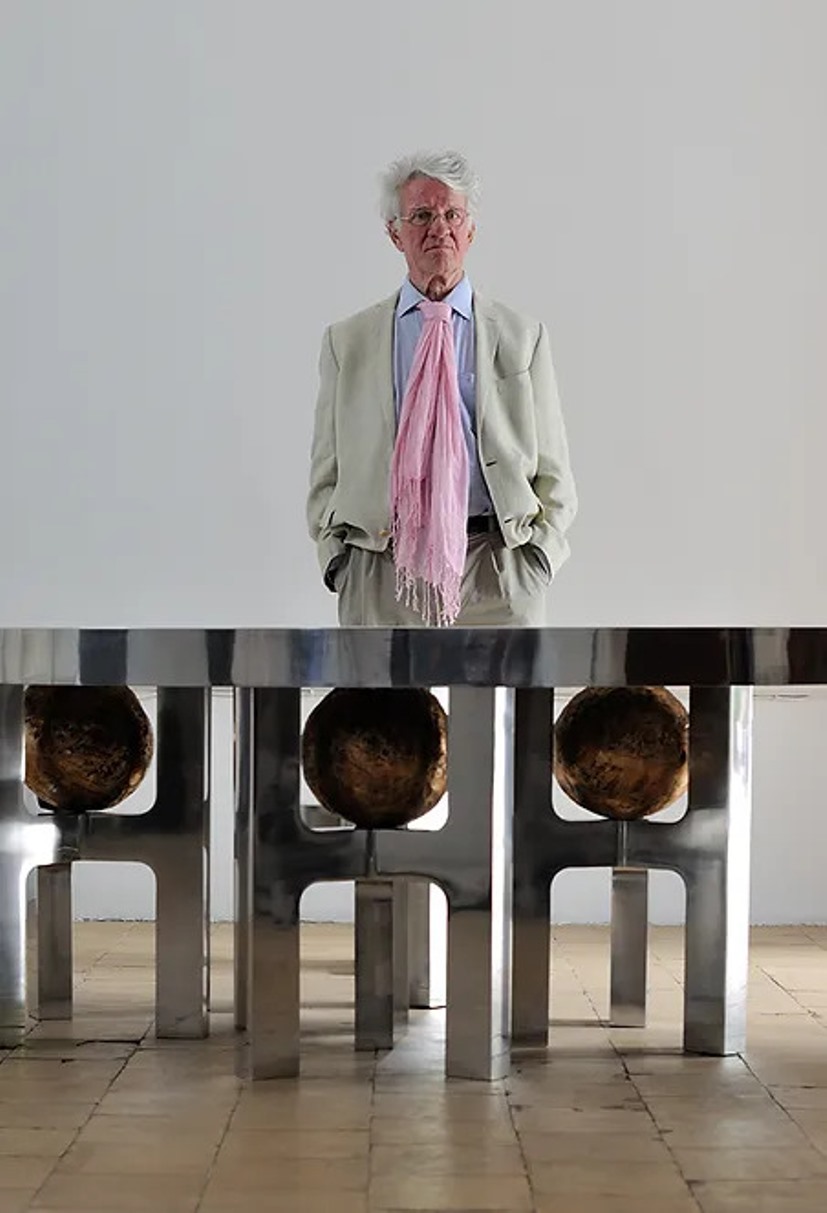
Ado Chale is a Belgian artist and designer best known for his exquisite mosaic inlays. Pieces of wood, minerals, or bone are sliced, arranged, and coated with resin to form the opulent surfaces. His furniture and domestic objects reference the natural world not only through the use of precious stones, metals, and organic materials, but also through the textures, patterns, and forms they express. Chale opened his first gallery in 1962. He exhibited jewelry and small side tables adorned with his unique inlay and sourced various gems and rocks via international travel. The self-taught craftsman then incorporated his acquisitions into larger pieces of furniture and sculptures attractive for their beauty and novelty in the 1970s. His work has been exhibited at the Ixelles Museum in Belgium, in France at the Museum of Fine Arts in Nancy and the Palais des Papes in Avignon, and in Japan at retail chain Seibu’s contemporary art museum.
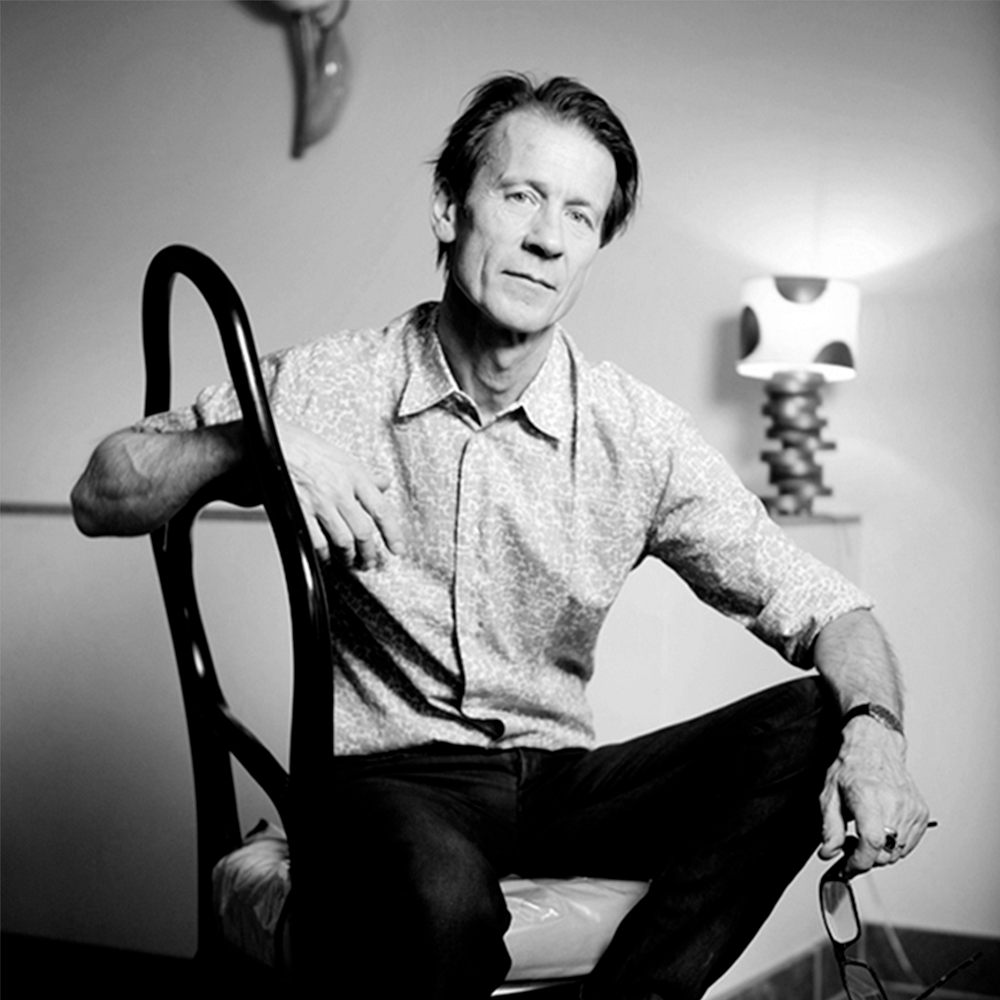
Mattia Bonetti is a Swiss artist and designer who lives and works in Paris. At first he was a stylist and photographer. In 1979 he became involved in furniture design, which he still does to this day.

Ado Chale is a Belgian artist and designer best known for his exquisite mosaic inlays. Pieces of wood, minerals, or bone are sliced, arranged, and coated with resin to form the opulent surfaces. His furniture and domestic objects reference the natural world not only through the use of precious stones, metals, and organic materials, but also through the textures, patterns, and forms they express. Chale opened his first gallery in 1962. He exhibited jewelry and small side tables adorned with his unique inlay and sourced various gems and rocks via international travel. The self-taught craftsman then incorporated his acquisitions into larger pieces of furniture and sculptures attractive for their beauty and novelty in the 1970s. His work has been exhibited at the Ixelles Museum in Belgium, in France at the Museum of Fine Arts in Nancy and the Palais des Papes in Avignon, and in Japan at retail chain Seibu’s contemporary art museum.

Mattia Bonetti is a Swiss artist and designer who lives and works in Paris. At first he was a stylist and photographer. In 1979 he became involved in furniture design, which he still does to this day.

Ado Chale is a Belgian artist and designer best known for his exquisite mosaic inlays. Pieces of wood, minerals, or bone are sliced, arranged, and coated with resin to form the opulent surfaces. His furniture and domestic objects reference the natural world not only through the use of precious stones, metals, and organic materials, but also through the textures, patterns, and forms they express. Chale opened his first gallery in 1962. He exhibited jewelry and small side tables adorned with his unique inlay and sourced various gems and rocks via international travel. The self-taught craftsman then incorporated his acquisitions into larger pieces of furniture and sculptures attractive for their beauty and novelty in the 1970s. His work has been exhibited at the Ixelles Museum in Belgium, in France at the Museum of Fine Arts in Nancy and the Palais des Papes in Avignon, and in Japan at retail chain Seibu’s contemporary art museum.
